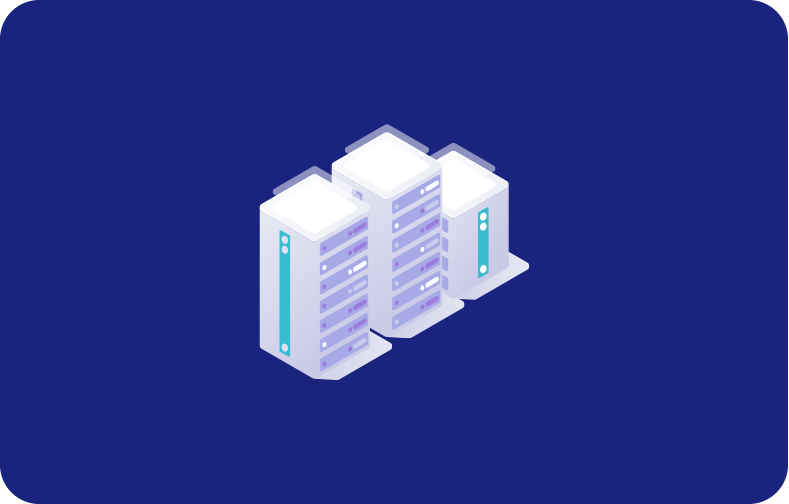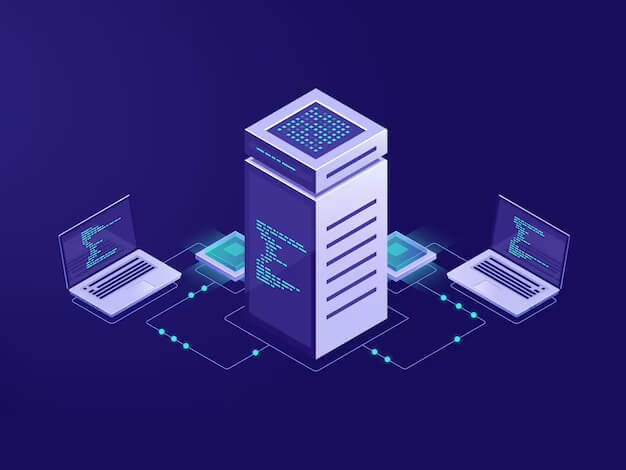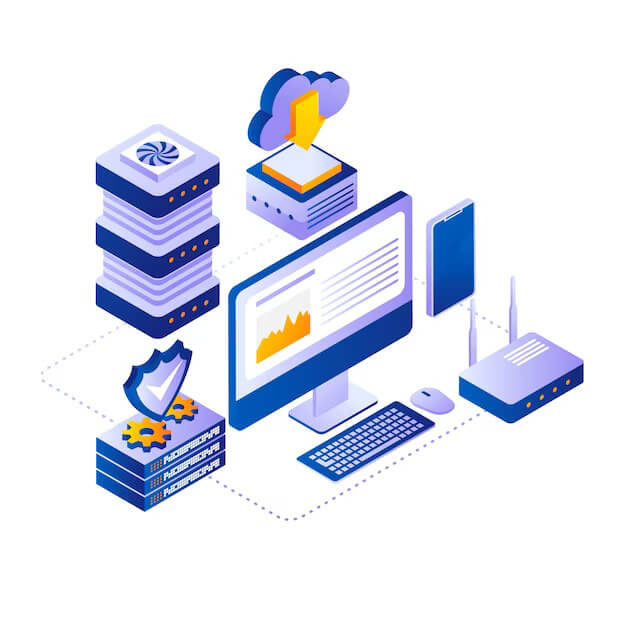Amazon VPS Pricing

For novices and veterans, decoding the financial complexities of Amazon Web Services (AWS), particularly its Virtual Private Server options, is no easy feat. The uniqueness of our guide lies in the fact that it makes the AWS services pricing formula clear and easy to understand while using a user-centric approach. Our goal is to decode the multiple aspects of AWS pricing, covering everything from payment options to the advantages of the AWS Free Tier and the particular costs linked to Amazon's Virtual Private Cloud (VPC).
VPSServer VS Amazon VPS Pricing Comparison
| Feature |
VPSServer.com Plan 1 |
VPSServer.com Plan 2 |
VPSServer.com Plan 3 |
AWS Lightsail 10 Plan |
AWS Lightsail 8 Plan (Windows) |
AWS Lightsail 12 Plan (Windows) |
| Price | 3.99/mo | 7.99/mo | 15.99/mo | 10/mo | 8/mo | 12/mo |
| Memory | 1 GB | 2 GB | 4 GB | 2 GB | 512 MB | 1 GB |
| Processor | 1 core | 2 cores | 4 cores | 2 vCPUs | 2 vCPUs | 2 vCPUs |
| SSD Disk Space | 20 GB | 50 GB | 80 GB | 60 GB | 30 GB | 40 GB |
| Transfer | 500 GB | 1 TB | 2 TB | 3 TB | 1 TB | 2 TB |
VPSServer unmistakably stands out as the more wallet-friendly alternative. The basic package from VPSServer, tagged at a modest 3.99 monthly, undercuts AWS Lightsail's 10 plan yet still delivers a solid 1 GB of memory alongside 20 GB in SSD storage. Delving into the mid-range options, VPSServer’s offering at 7.99 per month emerges as a more budget-friendly alternative to AWS Lightsail’s similar 10 option, providing 2 GB of memory and 50 GB of SSD storage, effectively matching the AWS package in terms of specifications. Moving to the upper tier, VPSServer’s advanced plan, with a monthly fee of 15.99, brings to the table a robust 4 GB of memory and 80 GB of SSD storage, making it an attractively priced contender when compared to AWS Lightsail’s 12 Windows server plan, which notably includes only 1 GB of memory and 40 GB of SSD storage. This comparison accentuates VPSServer’s edge in offering competitively priced plans without compromising storage and memory capacity. This comparative breakdown underlines VPSServer as a viable and economical choice, especially for users looking for robust performance without a hefty price tag.
How does AWS Pricing Work?

Amazon Web Services (AWS) functions under a distinctive, highly sophisticated fee structure, carefully designed to cover various computing needs. Under AWS’s pricing policy, usage-based billing is the fundamental approach to ensuring that customers only pay for what they use. This method effectively sidesteps the requirements for preliminary capital investments or protracted financial engagements, directly correlating expenses with actual resource utilization.
AWS's pricing is influenced by various elements

Instance Types
AWS features a variety of instance categories, individually designed to suit specific demands, from memory-focused and computation-centric to broadly applicable multipurpose instances.
Regional Differences
Costs may vary according to the AWS region selected. Each region, a separate geographical area, hosts multiple data centers known as Availability Zones, each distinct and physically isolated.
Storage Solutions
AWS provides a range of storage solutions, each characterized by its pricing structure. This encompasses Amazon S3 for object storage, EBS for block storage, and Amazon Glacier for extended-duration data archiving.
Practical examples illustrate this variability in pricing
A small e-commerce site may benefit from a budget-friendly, general-purpose instance, whereas a large data analytics enterprise might require a more robust, compute-optimized instance.
How Do You Pay for AWS?
AWS presents multiple payment plans, allowing businesses to pick a model that most suitably matches their financial and operational plans.
Pay-As-You-Go
The base-level pay-as-you-go system is an optimal solution for enterprises experiencing fluctuating workloads. It provides the flexibility to modify resource usage in response to real-time requirements, guaranteeing that expenses are only associated with the resources that are actively employed.
Save When You Commit
For businesses with predictable workloads, AWS offers the option to reserve instances or commit to certain usage levels in exchange for significant discounts. Reserved instances provide a substantial discount compared to on-demand pricing in return for a commitment to use a specific instance type in a specific region for one or three years.
Pay Less by Using More
AWS also offers volume-based discounts, where unit costs decrease as usage increases. This approach benefits large-scale users, as the more you use, the less you pay per unit.
AWS Free Tier
The AWS Free Tier presents a fantastic opportunity for newcomers to AWS, allowing them to delve into and test AWS services at no cost. This tier features promotions that remain free for the first 12 months after signing up for AWS, in addition to perennially free offerings.
Nevertheless, being aware of the Free Tier's constraints is crucial to prevent surprise billing. For instance, while the Free Tier includes up to 750 hours per month of t2.micro instances in Amazon EC2, surpassing this allocation can lead to additional fees. Don't forget to check the EC2 Spot Instances.
Amazon VPC Pricing

Amazon Virtual Private Cloud (VPC) grants users the ability to forge a virtual network enclave within the expansive AWS landscape. VPC pricing operates independently of other AWS service charges and is governed by a constellation of factors:
Data Transfer
AWS applies charges for data transmitted into and out of a VPC. Nevertheless, data transmission within a VPC or between VPCs located within the confines of the same AWS region generally remains exempt from supplementary charges.
Hourly VPN Connections
Establishing a VPN connection to your VPC results in an hourly fee for each active VPN connection maintained.
Elastic IP Addresses
AWS provides Elastic IP addresses, which are static IPv4 addresses crafted for the fluid realm of cloud computing. While there is no cost associated with creating and initially associating an Elastic IP address with an instance, a modest fee applies if it remains unassociated with any running instance or if multiple Elastic IPs are affixed to a solitary instance.
Optimizing VPC costs involves understanding your network architecture and traffic patterns. For instance, using private IPs for communication within the same region can help avoid data transfer costs.
AWS pricing is designed to provide flexibility and scalability to customers. By comprehensively comprehending the assorted pricing structures and alternatives, organizations can aptly strategize and proficiently streamline their AWS expenditures. Regardless of whether you're steering a fledgling startup or overseeing a sizable enterprise, AWS equips you with the requisite instruments and pricing frameworks to tailor your solutions in accordance with your unique requisites.
Amazon EC2 Pricing

Amazon Elastic Compute Cloud (EC2) provides a versatile pricing structure designed to meet various computing needs. Customers can choose from different purchase models, including:
On-demand pricing
Offers flexibility with hourly or second-by-second billing, making it ideal for variable workloads accounts.
Savings Plans
Provide cost savings for consistent usage commitments over one or three years.
Spot Instances
Offer access to cost-effective unused capacity for workloads with flexible schedules.
For specific requirements, EC2 offers options like:
On-Demand Capacity Reservations
Empower users to secure the precise capacity they need for Amazon EC2 instances within a designated Availability Zone, regardless of the timeframe.
Capacity Blocks for ML
Designed specifically for machine learning (ML) workloads, offering reserved capacity for these intensive tasks.
Dedicated Hosts
Dedicated Hosts are physical servers with Amazon EC2 instance capacity fully dedicated for your use. They help meet compliance requirements that may not support multi-tenant virtualization or licensing that does not support cloud deployments.
Billing every second enhances cost efficiency for workloads that vary or last for a brief duration.
AWS Pricing Calculator
The AWS Pricing Calculator, an innovative resource provided by Amazon Web Services for your personal browser, serves to guide users in calculating their projected financial outlay when engaging with a variety of AWS solutions. This tool is precious for both individuals and businesses engaged in or considering cloud computing solutions via AWS. It plays a crucial role in financial planning and budget management, providing an accurate forecast of potential costs associated with AWS's diverse range of cloud services.
Key Features of the AWS Pricing Calculator
Cost Estimation
This tool provides assistance in evaluating the expected costs on a monthly or annual basis for accessing diverse AWS services, including Amazon EC2, S3, and RDS. By inputting projected usage information, like the volume of instances, necessary storage capacity, and data transfer rates, it facilitates the generation of an approximate expense calculation.
Customizable Scenarios
Users can create different scenarios based on their specific requirements. This is useful for comparing costs under various usage patterns or service configurations.
Detailed Breakdowns
The calculator provides detailed cost breakdowns for each service, which includes individual components like computing, storage, data transfer, etc.
Templates for Common Solutions
AWS Pricing Calculator offers templates for common AWS solutions and architectures, which can be a good starting point for estimating costs for typical setups.
Global Pricing
It takes into account the regional variations in AWS pricing. Users can select different AWS regions to see how location affects costs.
Export and Share Estimates
The calculated estimates can be exported or shared with others, which is handy for collaborative planning or approval processes in organizations.
For those overseeing cloud resources, this tool is invaluable due to the intricate and widely fluctuating nature of cloud expenses, which depend on factors like usage habits, types of services, and geographical locations. It is essential in developing thoughtful and strategic approaches to managing cloud service spending, ensuring a wise and effective allocation of budget in plans centered around cloud finances.
Frequently Asked Questions
What is Amazon VPS and its Pricing Model?
Under the Amazon Web Services framework, the Amazon Virtual Private Server offers a cloud-based server option. This service allows users to implement applications on a virtual server, which is integrated into AWS's comprehensive network. Its pricing system is tailored with a complex yet refined fee structure centered around usage-based billing. This approach allows customers to pay exclusively for the resources they utilize, thereby sidestepping the necessity for significant upfront costs or enduring financial commitments. Pricing varies based on instance types, regional differences, and storage solutions. AWS offers different instance categories designed for specific needs, including memory-focused, computation-centric, and general-purpose instances.
How does VPSServer's pricing compare to Amazon VPS?
VPSServer offers a more budget-friendly alternative compared to Amazon VPS (AWS Lightsail).
The basic package from VPSServer is priced at 3.99 monthly, offering 1 GB of memory and 20 GB SSD storage, while AWS Lightsail's similar plan is 10.
The intermediate package offered by VPSServer is priced at 7.99 monthly and includes 2 GB of RAM along with 50 GB of SSD storage. On the other hand, AWS Lightsail provides a similar plan for 10 per month, featuring comparable specifications.
In the upper tier, VPSServer's plan costs 15.99 monthly for 4 GB of memory and 80 GB SSD storage, whereas AWS Lightsail's 12 plan offers 1 GB of memory and 40 GB SSD storage.
What are the different payment options available in AWS?
AWS offers several payment plans:
Pay-As-You-Go: Ideal for fluctuating workloads, this plan allows for flexibility, and expenses are based on actual resource usage.
Save When You Commit: AWS offers the option to reserve instances for one or three years at a discount for predictable workloads.
Pay Less by Using More: Volume-based discounts are available, where costs per unit decrease as usage increases.
Savings Plans and Spot Instances: For consistent usage or flexible schedules, AWS offers savings plans and access to unused capacity at lower costs.
Does AWS offer a Free Tier, and what does it include?
Indeed, AWS provides a Free Tier, which is especially advantageous for newcomers. This Free Tier encompasses select services free of charge for the first 12 months following registration, along with some services that remain free indefinitely. This includes up to 750 hours per month of t2.micro instances in Amazon EC2. However, users need to be aware of the limitations to avoid unexpected charges.
What are the additional costs associated with using Amazon VPC?
The costs associated with Amazon Virtual Private Cloud (VPC) include:
Data Transfer: Charges apply for data transmitted into and out of a VPC. Nevertheless, data transfer inside a VPC or among VPCs located in the same region is usually not subject to any charges.
Hourly VPN Connections: An hourly fee is charged for each active VPN connection to a VPC.
Elastic IP Addresses: There is no initial cost for creating and associating an Elastic IP address with an instance, but fees apply if it remains unassociated or if multiple Elastic IPs are used with one instance.










